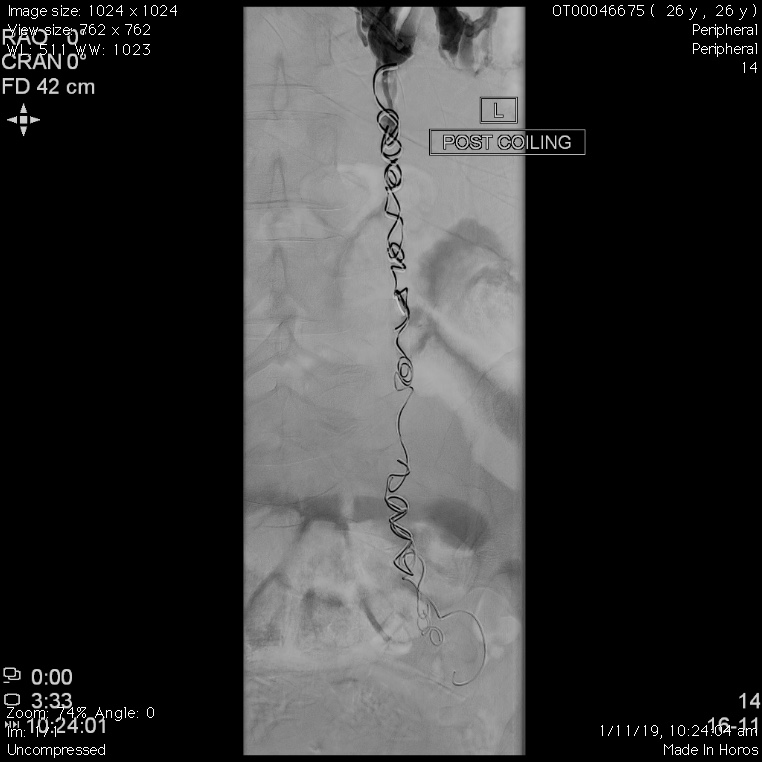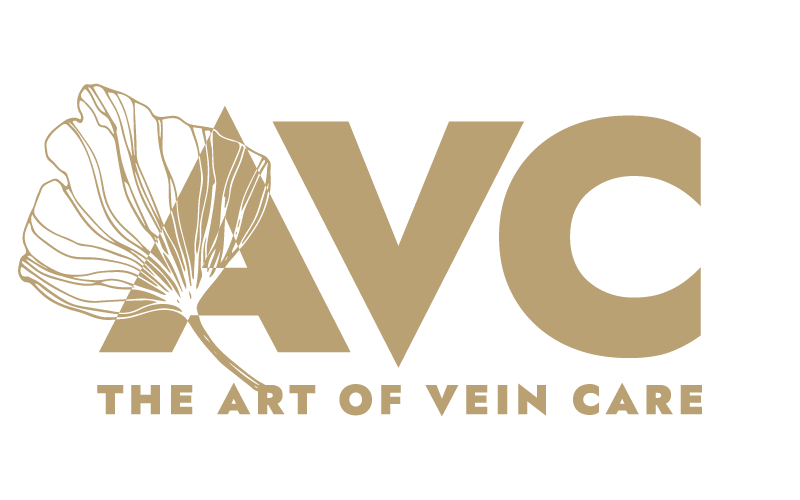Ovarian Vein Coiling
- Minimally invasive surgery for chronic pelvic pain
- Day procedure at Wollongong Private Hospital
- > 80% success rate
What is Ovarian Coiling?
- Ovarian coiling or ovarian vein embolization is a minimally invasive day procedure to treat ovarian vein incompetence.
- This occurs when the valves in the ovarian vein malfunction and instead of flowing out of the pelvis and up to the heart, the veins send blood flow down to the pelvis.
- It is one of the main causes of pelvic congestion syndrome and may also cause varicose veins in the legs to worsen.
- Dr Huber performs this as a day procedure at Wollongong Private Hospital.
- During the procedure, metal coils are placed in one or both (usually the left) of the ovarian veins to block them off and prevent further leakage.
- Whilst 1 in 3 women experience pelvic pain in their life and 15% experience chronic pelvic pain, this pain can be related to many gynaecological causes such as endometriosis, bladder issues and fibroids. (Source 1)
- However once your doctor has ruled out these conditions first, pelvic congestion, often caused by vascular issues, such as ovarian veins malfunctioning should not be overlooked.
*Source*1 Medical Republic GP publication: Pelvic congestion are we missing the diagnosis?
How do I prepare for an Ovarian Coiling procedure?
- This procedure is not done during pregnancy due to radiation.
- So always discuss your pregnancy status as well as any allergies, medications and herbal supplements or vitamins you are in. It is important to have nothing to eat or drink 8 hours prior to your procedure. The hospital will inform you of your time.
Why do you need Ovarian Coiling or Ovarian Embolization procedure?
- Ovarian vein coiling (or ovarian vein embolisation) is a technique for blocking the ovarian vein if it becomes incompetent.
- Incompetence occurs when the valves in the ovarian vein do not work and the flow is down into the pelvis (rather than out of the pelvis).
- Ovarian Vein Incompetence can be a problem after a pregnancy, and the issue increases with every subsequent pregnancy.
- This is due to the fact that during pregnancy, veins stretch to keep the blood flowing in the right direction, however this expansion can sometimes cause a malfunction in the valves.
- Studies show pregnant women are much more likely to have this issue than non pregnant women (Source 2).
- In the vast majority of cases, treatment is not needed as no symptoms are reported.
What happens during the Ovarian Coiling procedure?
- To ensure the highest level of accuracy, a liquid dye (contrast medium) is injected to outline the veins so they are visible with x-ray fluoroscopy using specialised medical imaging equipment.
- A specialised x-ray machine is used to take pictures as a catheter is guided by ultrasound, from the groin vein, arm vein or neck vein, to the vein/veins in the lower abdomen and pelvis.
- Sometimes a foaming agent may be used to cause the blood in the veins to sclerose (close off so they are a thread of scar tissue).
- Metal coils are then placed in the target faulty vein(s), sealing them.
- This blocks off the incompetent ovarian vein and causes it to become a thread of scar tissue.
- The coils are made of a special metal core with fine fibres attached which irritate the vein wall so that it collapses down and blocks off.
The blood then drains through veins where the valves are working and the return of blood flow out of the pelvis is improved. - Overall this treatment is effective in well over 90% of patients and can relieve symptoms of heavy bleeding, groin pain and achiness and heaviness in the groin.
- In the majority of people, treatment involves a left sided vein only. In some instances, both sides may need treatment.
- The entire process is done using local anaesthetic and sedation.
Do the coils stay in my body forever?
Yes, the coils are permanent, like an orthopaedic device. They harmless and MRI compatible and do not go off at airports.
Are there any people who should AVOID this procedure?
- Yes. Pregnant women should not have this procedure.
- The procedure is also not suitable for people who have an active infection of any kind for which they are taking antibiotics.
- Travel should be avoided for at least 4 weeks after the procedure due to the risk of blood clots.
What are the side effects of Ovarian Vein Embolization?
- Although the catheter used to guide the coils is removed in surgery, its use in surgery carries risk of damage to blood vessels, bruising and bleeding which are more common side effects.
- Less common side effects include infection although you will be given antibiotics to mitigate this.
- Extremely rarely, there may be an allergic reaction to contrast dye, although the hospital team is well equipped to deal with this should it ever arise.
- And very rarely, there is a chance that a coil can move and travel to the lung.
- DVT occurs in less than 1% of cases.


What is the recovery like for ovarian coiling (ovarian vein embolization)?
- Generally patients feel mild aching in the groin and sometimes left side of the back for a few days.
- Antibiotics are given when the catheter is inserted, to prevent infection risk.
- Generally you can return home on the same day, and normal activities can be resumed the next day.
Download an information sheet here

